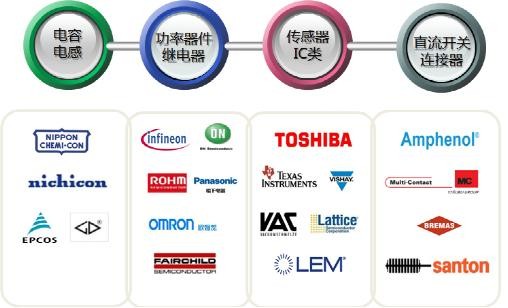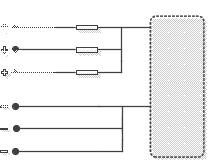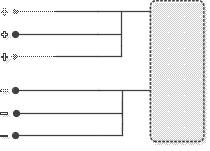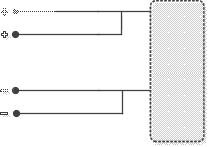summary: In the life cycle of photovoltaic power plants, the advantages and disadvantages of inverters largely determine the level of power generation gains from photovoltaic power plants. The technical expert Wang Changjun from the previous issue of Shengnengjie Technology shared with us the introduction to the selection of inverter specifications. This issue will give you details on how the reliability of the inverter is evaluated. introduction: In the initial investment of the entire photovoltaic power plant, the proportion of inverters is about 7%-10%, but in the actual operation of the power plant, the loss caused by a failure of the inverter is much larger than other equipment failures, so The reliability of the inverter is a key consideration for the benefits of the power station. Shengnengjie Technology's SE series inverter is a high-reliability string-type grid-connected inverter based on mature overseas platforms and designed with domestic practical application details. It includes two types: household type and commercial type. With SE SERIES INVERTER we have a look at how to choose a highly reliable inverter. One: the appearance of the structure Shell material: String-type grid-connected inverters need to be operated outdoors for a long time. The inverter's outer box material must be rust-proof and corrosion-proof. And it needs to pass the harsh salt spray test to ensure that the inverter can be used for a long time in the acid rain area, the offshore area or some chemical plant areas. Shengnengjie SE series inverters are all made of aluminum box, plus imported powder spray paint, and have been subjected to strict outdoor harsh environment application testing to ensure the structural box 25 years of service life. Waterproof and dustproof: Inverter work environment can not avoid to suffer the sun and rain, it must be ensured in the life cycle to achieve IP65 protection level, the key components of the inverter waterproof and dustproof design is the box structure and sealing gasket, SE series die-casting mold integrated structure design, with radiation-proof, anti-corrosion, high-heat resistant gaskets, make the SE series use outdoors without fear of wind and rain. Connection port: The choice of inverter AC/DC connection port is to remove the cover as much as possible, preferably a direct plug-in type connection terminal, so as not to damage the airtightness of the inverter when leaving the factory. In addition, during the construction of the direct pluggable port, the fool-type wiring method may be applied to prevent the cable from being connected incorrectly or being in poor contact and eliminating the potential for fire caused by short circuit and heat generation. II: Electrical Safety Key components: The lifetime of a typical PV plant is 20 to 25 years, and two inverters will be replaced during the life of the plant. Inverters ensure that the life of more than a decade is based on their internal critical device life. For this reason, we must consider the selection of the critical components inside the inverter when selecting the inverter. The key devices used in the SE series inverters are provided by international leading manufacturers. They are listed as follows: Heat Dissipation Mode: There are three ways to dissipate the heat of the general inverter device: natural heat dissipation, forced fan cooling, and water circulation heat dissipation. The most common are the former two methods. Most of the current inverters adopt the fan forced cooling method. The fan is used as the main component of the heat dissipation of the inverter, and the fault point and the service life thereof greatly reduce the heat dissipation reliability of the inverter. The impact is as follows: Dust is adsorbed on the fan blades, and the fan's heat dissipation efficiency is reduced or even the heat dissipation is ineffective. As a result, the inverter de-rates the work and affects the power generated by the photovoltaic power station. Foreign objects stuck on the fan blades, causing inverter failure, resulting in loss of power generation. The poor life of fans in harsh outdoor environments affects the life of the inverter. Considering the above factors, natural heat dissipation inverters are more conducive to the stable operation of the power station. Built-in lightning protection: The photovoltaic power station system is installed outdoors, and is easily subject to lightning strikes, resulting in failure of the power station and reducing the income of the power station investor. During the design of the power station, lightning rods are installed and surge protectors are installed in AC-DC power distribution boxes to prevent the impact of lightning on the power station equipment. In order to achieve multiple protection purposes, surge protectors need to be added on both sides of the AC-DC inverter. Some inverters on the market do not add this component, leaving hidden trouble for the reliable operation of the inverter. SE series inverters have built-in photovoltaic special lightning protection devices. Up to 40KA discharge current UL/CE certified special lightning protection module Secondary lightning protection level Built-in fuse: Each string of MPPT will have 1~4 PV strings connected in parallel. According to the principle of components, when the number of MPPT parallel strings on the same road is more than 2 lines, it must be on each side. Strings, such as fuses, are grouped to prevent heat and fire in the event of a photovoltaic string failure. At present, there are several string access methods on the DC side of the inverter: Option One In the first solution, DC fuses are added to each string in parallel, and when a certain string string fails, the failure caused by the inversion of the other two strings of working currents is prevented. However, the contacts of the DC fuse mounting terminals increase the access resistance in the line and increase the line loss. Prolonged operation may oxidize, fuse terminals have a risk of overheating and fire. Option II The second solution does not take into account the failure of one of the string strings, the failure of the other two strings of operating currents, and there is a great safety risk. Option 3 Secure String Access Mode Shengnengjie SE series inverter adopts scheme 3 design. When one group of strings is faulty, the other group of string inrush current is smaller than the safety current of the fault string, and the safe string access method ensures reliable lifetime of the inverter. The operation. Three: Display and Communication Display mode: there are three types of human-machine interface of the inverter: LED display, LED+LCD display, and LED+ smart wireless connection. LED display is more intuitive to see the inverter's operating status, but can not view the inverter operating data. The LCD can view the real-time operating data of the inverter and can operate and set the inverter. However, it will bring about several hidden troubles: The highlights or the installation location is not within the viewing angle caused by the LCD display can not see the problem In cold weather, it is easy to start or show bad problems LCD itself quality problems: white/black screen, bright spot/line, uneven brightness Easily affected by electromagnetic interference, resulting in poor display Long-term exposure to sunlight, rain, dust, salt spray, etc., reduces reliability Shengnengjie SE series inverter adopts LED+ smart wireless connection method, which can solve the above problems, and it is convenient for customers to analyze and set the parameters of the inverter data on the smart phone, which is simple and reliable. Communication: The conventional communication access method for collecting data from inverters in photovoltaic power plants is wired RS485, LAN and wireless WIFI, GPRS, PLC, etc. Each type of communication access has its own suitable scenario. . It is worth noting that in the case of both wired and wireless access, it is recommended to choose a wired method, and the communication is more reliable. Conclusion: The reliability of the inverter involves all aspects, from design, testing, manufacturing, and shipping to shipping are all key quality control points. The above is for everyone to share some points on the client can intuitively understand the reliability of the inverter, hoping to give you reference when selecting the inverter. Lawn lamps are an excellent way to add some life to your backyard or garden. These decorative lights not only add beauty and ambiance to your outdoor space but also provide safety and security by lighting up your walkways, stairs, and driveways. Advancements in technology have led to the creation of solar lawn lights and LED ground lights, which are more energy-efficient and environmentally friendly options than traditional electric lawn lamps. Solar-powered lawn lights require no wiring or electrical outlets and are charged through solar panels during the day, making them cost-effective and hassle-free. LED ground lights, on the other hand, are incredibly durable and can withstand harsh weather conditions, making them perfect for outdoor use. Other popular types of lawn lamps include solar garden lanterns and garden decorative lights, which can be used to create a cozy and inviting atmosphere in your backyard. In summary, lawn lamps are an essential part of garden or outdoor decor that enhances the ambiance, adds safety, and offers functionality to any space. Solar Lawn Lights,Led Ground Lights, Solar Garden Lantern,Garden Decorative Lights Ningbo Le Monde Lighting Co.,Ltd , https://www.zjlemonde-lighting.com


